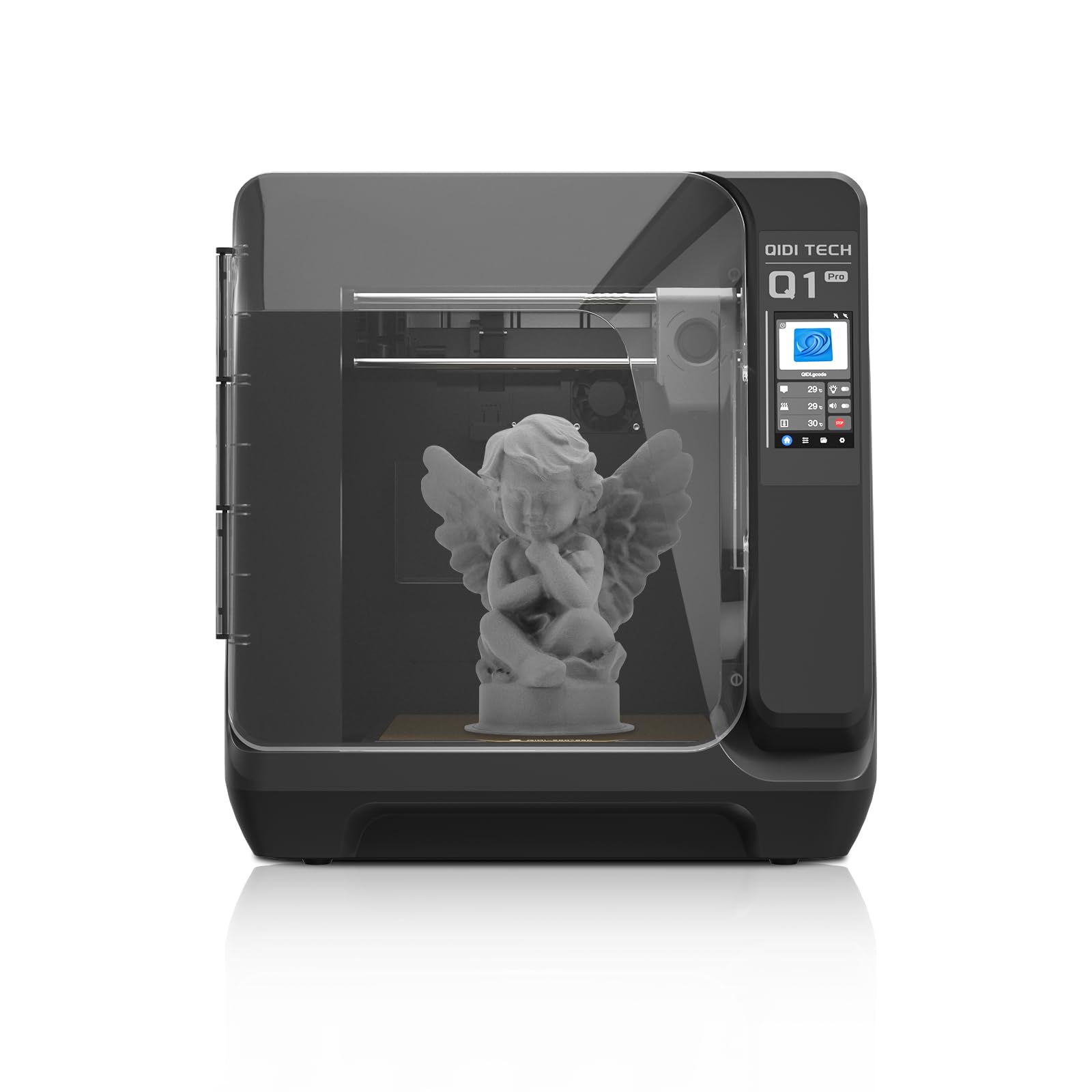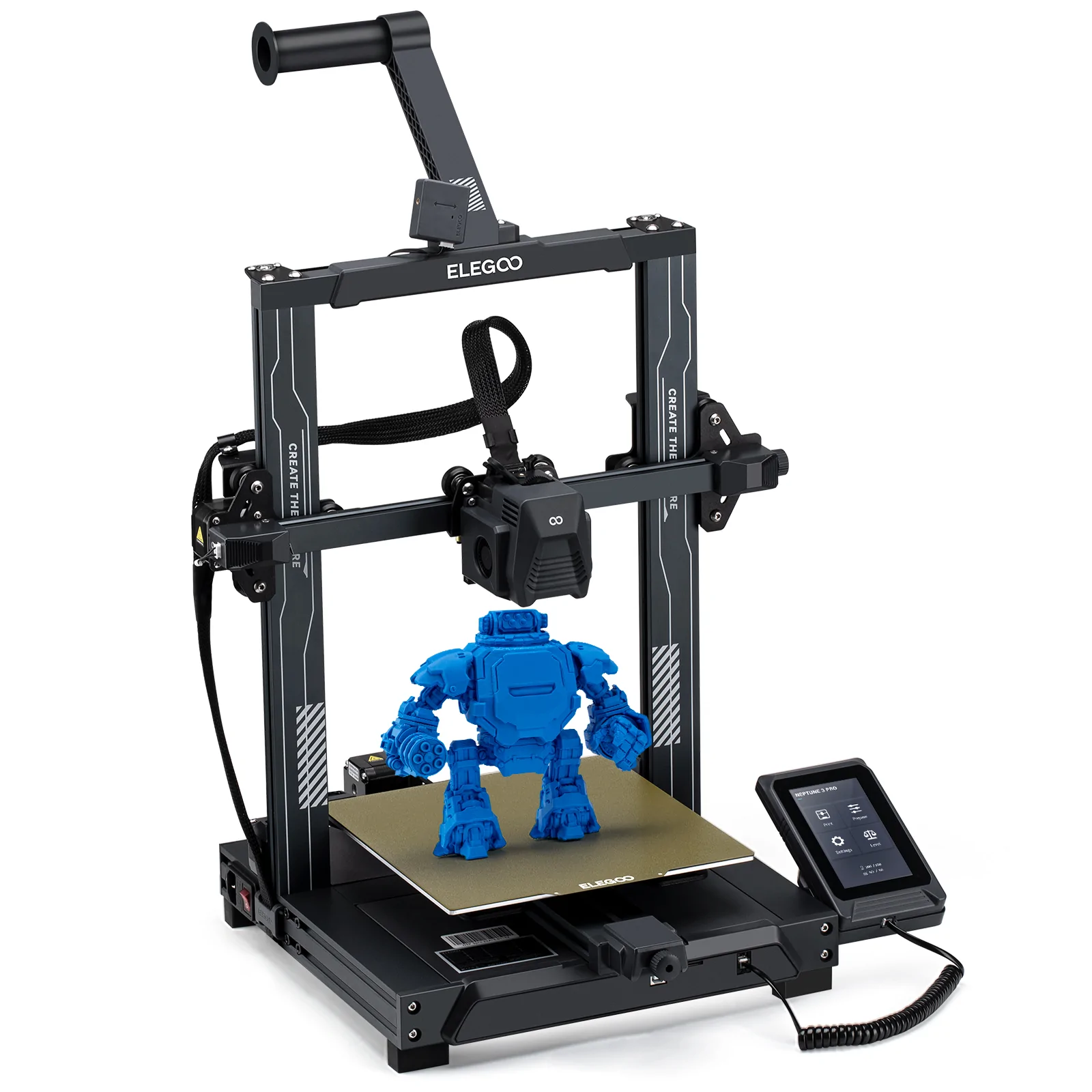Compare Q1 PRO vs Neptune 3 PRO
Comparison between the best 3D printers
Choose the best 3D printer at the best price. The cheapest 3D printers are here.
Buy a 3D printer here with 3D Fila.
 |
 |
|
| Model | Q1 PRO[BUY Q1 PRO] |
Neptune 3 PRO |
| Printing Material | Filament | Filament |
| Buy Filament for QIDI Q1 PRO | Buy Filament forElegoo Neptune 3 PRO | |
| Estimated price | $449,00 | $230,00 |
| Manufacturer | QIDI | Elegoo |
| Release Year | 2024 | 2022 |
| Print Volume [mm] | 245x245x245 | 225x225x280 |
| Printer Size [mm] | 467x477x489 | 445x515x475 |
| Weight [kg] | 20 | 8,1 |
| Power Loss Recovery | YES | YES |
| Enclosed printer | YES | NO |
| Bed Leveling | Automatic | Automatic |
| Filament End Sensor | YES | YES |
| Bed type | Heated | Heated |
| Power supply system | Direct Drive | Direct Drive |
| Standard nozzle | 0,4 | 0,4 |
| Maximum Nozzle Temperature [°C] | 350 | 260 |
| Maximum Bed Temperature [°C] | 120 | 100 |
| Maximum printing speed [mm/s] | 600 | 80 |
| Filament holder | YES | YES |
| Camera for supervision | YES | YES |
| Recommended filaments | PLA、ABS、ASA、PETG、TPU、PC、PA、PA-CF、PET-CF、PAHT-CF etc. | PLA, PETG, Tritan, Flex, ABS |
| Recommended slicers | QIDI Slicer/Cura/Simplify 3D/ORCA/PRUSA Slicer | Cura, Simplify, Slic3r, IdeaMaker e outros |
| Maximum Resolution [mm] | 0,1 | 0,1 |
| Processor | Cortex-A53,64-bit Processor | |
| Display | Touchscreen 4,3'' | Display touchscreen 4,3'' |
| Power Supply | 350 W | 250 |
| Connectivity | WiFi/USB Flash Drive/Ethernet Cable | |
| Operating systems | Windows, Linux, Macbook | Windows, Mac, Linux |
| Date of registration in the system | 2024-07-09 | 2023-03-02 |
| Release date | 2024 | 2022 |
| Extra features | The QIDI Q1 Pro 3D printer stands out for its Core XY structure and heating chambers that reach up to 60ºC, ideal for advanced materials such as ABS and Nylon. It features Klipper firmware, an automatic leveling system, a high-flow extruder with a double metal nozzle and a hotend that reaches 350ºC. It offers connectivity via Wi-Fi, USB and Ethernet, as well as a 1080p camera for remote monitoring and an intuitive touchscreen for easy operation. | The Elegoo Neptune 3 Pro printer stands out for its easy assembly and automatic bed leveling, ideal for different levels of users. Equipped with a direct-drive extruder and dual gears, it offers excellent adhesion to slippery materials such as TPU. It incorporates dual screws on the Z-axis, ensuring stable prints, and features an integrated task light for improved visibility. With a PEI-coated build plate and a detachable touchscreen, it combines functionality and convenience. The printer also features an efficient cooling system, filament sensor and a simplified user interface. |
| Support for multiple colors and materials (AMS and CFS) | NO | NO |
Notes * |
||
| Cost-benefit | 8 / 10 | 6 / 10 |
| Hardware | 4.8 / 10 | 2.4 / 10 |
| Tela | . | . |
| Print volume | 3 / 10 | 3 / 10 |
| Performance | 5 / 10 | 0 / 10 |
| [BUY Q1 PRO] |
Conclusion |
| In comparing the QIDI Q1 PRO and the Elegoo Neptune 3 PRO, several key factors emerge that highlight the strengths and weaknesses of each printer. The QIDI Q1 PRO, priced higher, offers superior capabilities suited for advanced users. It features a larger print volume, higher maximum nozzle and bed temperatures, and impressive maximum printing speeds, making it suitable for a wider range of materials, including more complex filaments like ABS and Nylon. This printer also boasts a fully enclosed design, which aids in temperature stability, ensuring successful prints with demanding materials. With additional features like an intuitive touchscreen, Wi-Fi connectivity, and a built-in camera for monitoring, the QIDI Q1 PRO significantly enhances user experience and functionality. On the other hand, the Elegoo Neptune 3 PRO presents a more budget-friendly option without compromising essential features, such as automatic bed leveling and a direct-drive extruder. It's ideal for beginners or hobbyists due to its ease of assembly and user-friendly interface. While it has limitations in terms of maximum printing speeds and material variety, it excels in providing solid performance for common filaments like PLA and PETG. Furthermore, its lightweight design enhances portability, making it appealing for users with space constraints. In conclusion, if budget is a key consideration and the primary focus is on basic 3D printing tasks, the Elegoo Neptune 3 PRO may be the more sensible choice. However, for those willing to invest more for advanced capabilities and a broader range of materials, the QIDI Q1 PRO stands out as the superior option. Ultimately, the best choice depends on the user's specific needs, preferences, and budget constraints, balancing features against cost effectively. |

